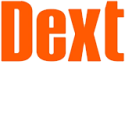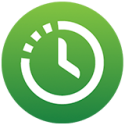Print or digital: What’s your summer reading choice?

Ahh, summer. Those long, lovely, lazy days are almost here—and for many of us, that means one thing: Lots and lots of beach or backyard reading.
You may already be planning your vacation reads, but have you thought about how you’ll read them? Whether you’re a die-hard digital fan—Kindle, Nook, tablet, phone—or you’d die before you give up your print books, both reading methods have different advantages for readers.
Ease of transport
The average eReader weighs seven to eight ounces. The average 300-page paperback book weighs 15.6 ounces. According to Amazon, the typical book text is about 1MB. That means an 8MB Kindle Paperwhite can hold up to 6,000 books, or about 3,000 if you like books with more graphics. That can lighten your luggage load significantly.
Reading experience
As children, we generally start reading with the tactile experience of holding a book—or snuggling with someone who holds it—turning the pages, smelling the paper (or is that just us?) and being entertained by the colorful art. It’s a warm and fuzzy sensory experience that implants in our memories early and isn’t easily overcome.
On the other hand, with adjustable font sizes, ease of turning pages, built-in dictionaries and text-to-speech, an eReader makes reading accessible to those who have a hard time seeing, holding or wading through print books.
Environmental friendliness
No deforestation, no paper, no ink, no shipping, no storage space, no landfill equals very little carbon footprint. That’s a definite plus for the eReader. Of course, it also takes minerals, metals and energy to create and use an eReader, so natural resources are still required.
In print books’ favor, you can swap, borrow, give away and recycle them. Plus, many paper companies have developed sustainable manufacturing practices that offset the production of physical books. A lot depends on your reading habits, but frequent digital readers do tend to have less of an impact on the environment than ravenous print book fans.
Book safety
It may not be a pleasant experience, but after a paper book has fallen into a pool or a hot tub, it’s still possible to let it dry and keep reading. A digital reader? A dunking is more likely to mean repairs—or the purchase of a new device.
Better pricing
The initial cost for an eReader can run more than $200 (but you can always download the app to a smartphone or tablet for free). Digital books purchased online tend to cost less than print books, but make sure to check prices on both formats if you have the option to read either version. eBooks, especially when first released, have been known to be more expensive than digital.
Book availability
Print books aren’t always readily available, and sometimes must be ordered. Digital books generally are just a quick download away.
According to a recent Pew Research survey, 72% of adults in the United States read a book in some format over the last year. So, no matter where you fall in your reading method preferences, neither book format is going away any time soon. The important thing here is that the love of reading is still alive and well.
Now, all those books aren’t going to read themselves this summer, so start building your stash—digitally or physically...or both—for those sweet, sweet vacation days!





